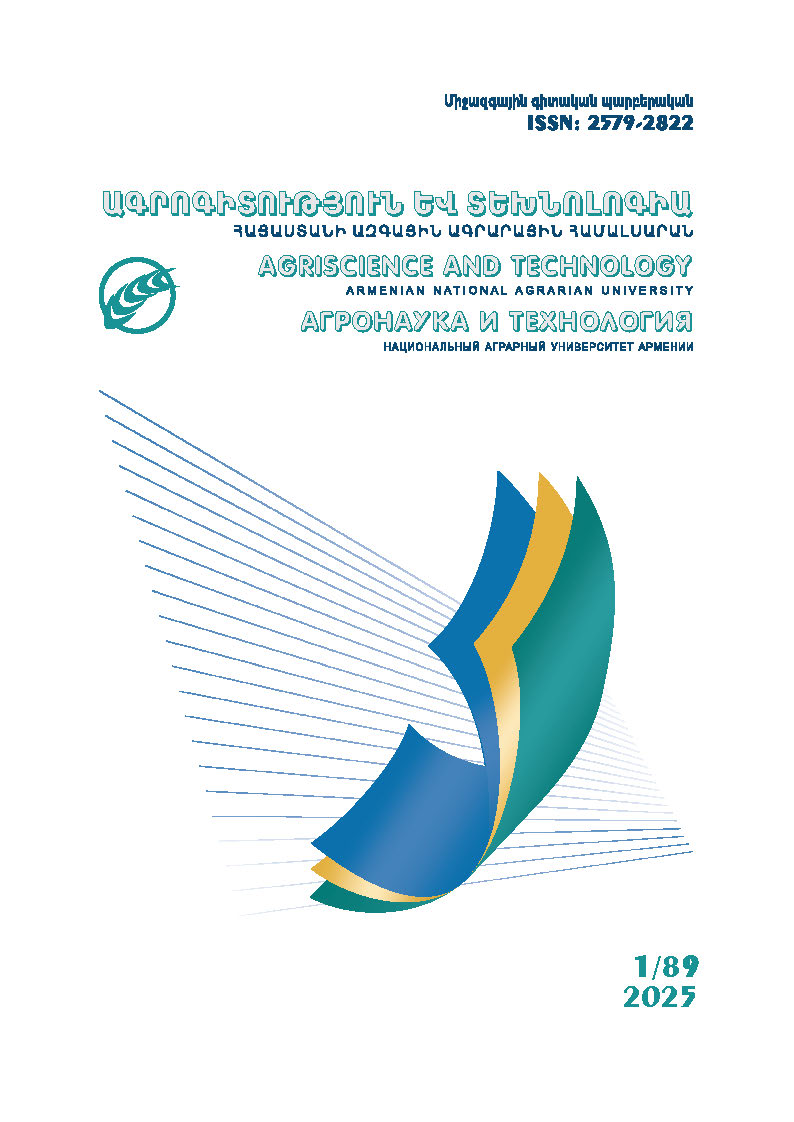Identifying the Optimal Structure for Agricultural Land Types through the Example of Sis Settlement
DOI:
https://doi.org/10.52276/25792822-2025.1-9Keywords:
agricultural land types, economic-mathematical modeling, land use organization, optimal structure, sustainable developmentAbstract
The article examines the sustainable development challenges faced by the Sis settlement in the Ararat Valley, focusing on effective agricultural land use and the role of econometric modeling in addressing these issues. The region’s mix of agricultural activities, aquaculture, and environmental concerns creates a complex situation for sustainable growth. Key challenges include salinization, waterlogging, and the pressures from intensified agricultural practices, especially aquaculture, which deplete groundwater resources. The expansion of fish farming is contributing to declining groundwater levels while leading to over- saturation, swamp formation, and the salinization of surrounding agricultural lands, significantly impacting agricultural productivity and economic viability in Sis. To tackle these challenges, the article proposes a comprehensive strategy that includes optimal land management, rigorous environmental assessments, and sustainable agricultural practices. It suggests using econometric modeling to analyze land use patterns, evaluate resource allocation, and forecast the long-term economic impacts of different agricultural methods. By applying these models, stakeholders can identify efficient practices that maximize productivity while minimizing environmental degradation. Furthermore, the article stresses the importance of integrating economic, social, and environmental factors in decision-making to promote sustainable development. This holistic approach aims to balance agricultural productivity with ecological preservation, ensuring the long-term sustainability of the Sis settlement. Ultimately, the article highlights the need for collaborative efforts among local communities, policymakers, and researchers to implement strategies that enhance resource management and support the sustainable growth of the region’s agricultural sector.
Downloads
Published
How to Cite
Issue
Section
License
Copyright (c) 2025 Monika Khachatryan, Gurgen Yeghiazaryan

This work is licensed under a Creative Commons Attribution-NonCommercial 4.0 International License.
Creative Commons Attribution-Non-Commercial (CC BY-NC). CC BY-NC allows users to copy and distribute the article, provided this is not done for commercial purposes. The users may adapt – remix, transform, and build upon the material giving appropriate credit, providing a link to the license. The full details of the license are available at https://creativecommons.org/licenses/by-nc/4.0/.





